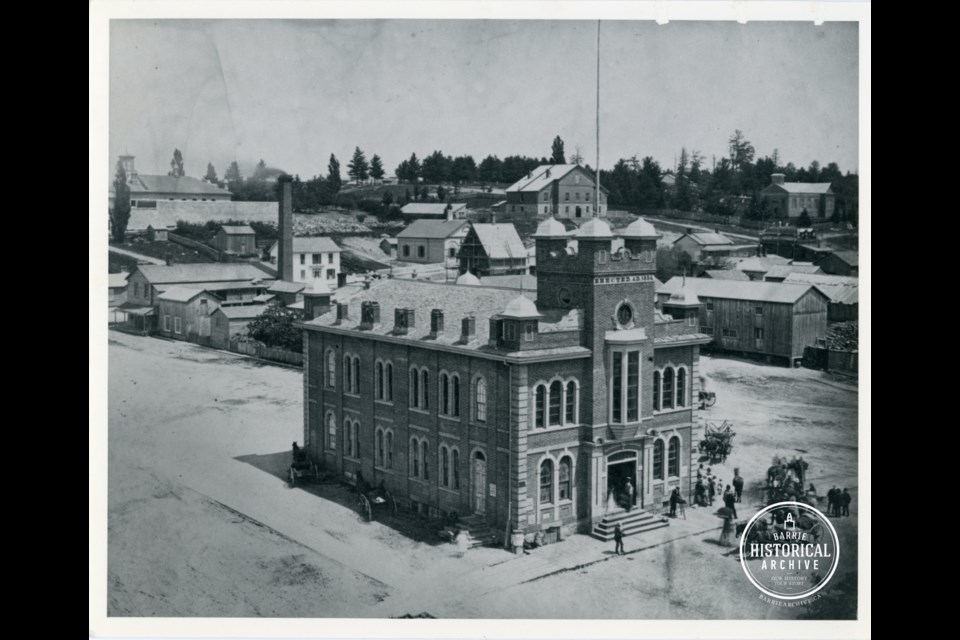“I sleep in an old German dugout. I find it damp and musty. It is furnished with beds, table, chairs etc. I have made a stove out of an old oil tin and as we can get coal here, we manage to keep fairly comfortable. The mud is waist high in places.”
John Edward Montgomery was a very long way from home. These accommodations were a far cry from his fine residence on Cartier Street, just off Granville Street, in Vancouver, where neighbourhood homes regularly fetch in the range of $5 million today.
During the Great War years, the local Barrie newspapers often printed letters home from the front. On Dec. 14, 1916, when the Barrie Examiner shared this November dated letter to his father, Capt. John Montgomery was a 30-year-old physician serving with the 13th Field Ambulance in France.
“It is altogether different here than it was at Ypres. The men say it was like an old men’s home when compared to our present situation. There has been an endless war from the guns for the last three days, one wonders when it will cease.”
John Montgomery grew up in moderately comfortable surroundings in Barrie. Born in early 1886, he was the son of Fred Montgomery, the deputy registrar of Simcoe County, who had served in the role for close to 50 years.
After attending the elementary and high schools of Barrie, John and his brother, Lynn Myers Montgomery, sought out higher education. John studied medicine while Lynn looked to the law for his career path.
John Montgomery attended the University of Toronto and then took post-graduate work in New York, Chicago and Toronto.
His first position as a qualified medical doctor was the role of ship’s surgeon on the fashionable ocean liner, R.M.S. Empress of Japan, as she traversed the Pacific Ocean. Dr. Montgomery made his home base in British Columbia and it was there that he met Sarah Viola Matthews.
When John married Viola in 1912, he gave up his seafaring job and settled down as a family doctor in the booming coal mining town of Corbin, B.C., very close to the Alberta border.
Within a year, the couple had left the wilds of Rocky Mountain living and relocated to Vancouver Island. Soon, children began to arrive and the future of the Montgomery family looked rosy. Then came the circumstance that disrupted so many lives – the war in Europe.
In June 1916, at Comox, B.C., Dr. Montgomery enlisted. As a physician, member of the Canadian Army Medical Corps, and previously experienced with the 35th Battalion, he was the ideal recruit.
Just before his enlistment in the Canadian Expeditionary Force, Dr. Montgomery and a group of military officers took a trip amongst the coastal lumber camps of British Columbia to encourage able bodied men to sign up. Montgomery was amazed that he sometimes encountered loggers and trappers who hadn’t yet heard about a war in Europe!
Montgomery arrived in Liverpool, England, on July 10, 1916 and one month later, he landed at Le Havre in France.
As his letters home to his Barrie family show, the doctor was very quickly put into the thick of it.
“We are at the hottest place on the British front at present. We have been here for the last month. I have been kept busy constantly. I hope I may be sent back soon for a much-needed rest, in an easier place.
"Our unit is temporarily broken up into small groups to assist in clearing the battlefields. For the last sixteen days, I have been in charge of two advanced dressing stations. I have nineteen men assisting me. We have two motor ambulances and one horse ambulance (with four horses).”
Dr. Montgomery’s exertions resulted in a hernia so debilitating that he himself was evacuated to a hospital far from the front. Upon recovering from that, Montgomery contracted catarrhal jaundice which is otherwise known as infectious hepatitis. He spent the last of his overseas time in England instructing other battlefield medics.
A year after his departure, Dr. Montgomery was back on Canadian soil. He gathered his wife and children, who had been staying with his parents in Barrie during his absence, and returned to the west coast.
In a sad irony, the well-trained doctor who had seen so much on the battlefields, and avoided being wounded or killed there himself, fell while tending to children during an outbreak of diphtheria in 1923. He was 37 years old.



